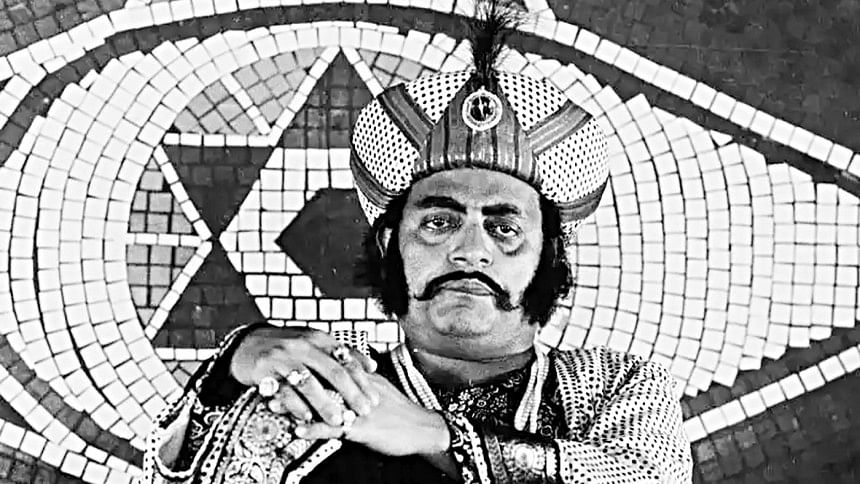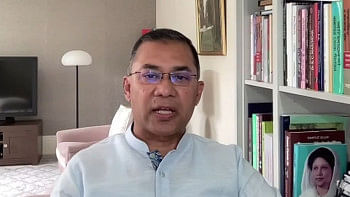Are we praising the right films?

When did we last watch a formally-innovative Bangladeshi film that made a conscious attempt to confront and denounce a long-standing social problem of our country? And when did we last witness people's huge enthusiasm to watch a film that did away with alluring ingredients and attempted to raise people's sociopolitical consciousness? Taking a look at influential films of world cinema makes us understand that good films incorporate thought-provoking content as well as innovative form. A socially-relevant story cannot instill critical consciousness into viewers if it is accompanied by traditional filmic devices that provide shallow entertainment.
Hirak Raajar Deshe and Bhoot er Bhabishshat, two Bangla films of West Bengal, draw amply on humorous elements. Yet, instead of trivial entertainment, these films provide piercing political critiques. In Hirak Raajer Deshe, apparently amusing dialogues in the form of rhyming couplets contain Satyajit Ray's acid wit. They jolt the audience and make them understand the sheer injustice that torments people within the rule of a ruthless tyrant. In Bhoot er Bhabishshat, discussions on filmmaking in the film's narrative and frequent shifts from narrative events to the conversation between two people disturb the spectator's passive immersion into the film. Because of its innovative form, Bhoot er Bhabishshat does not provide the viewers with the pleasure they usually obtain from watching a conventional film.
Satyajit Ray once wrote: "For the truly serious, socially conscious filmmaker, there can be no prolonged withdrawal into fantasy. He must face the challenge of contemporary reality, examine the facts, probe them, sift them and select from them the material to be transformed into the stuff of cinema." Contemporary Bangladeshi films made outside the dominant film industry are not informed by the above statement of this much-revered Bengali filmmaker. In the past, films made in our country such as Shurjokanya, Rupali Shaikat e, Shurjo Dighal Baari, Matir Moina and Runway came to grips with serious social issues, such as subjugation of women in patriarchal societies, dictatorial rule, exploitation of the underprivileged, harmful effects of religious orthodoxy, the rise of Islamist extremism etc. Instead of highlighting flamboyance and flashiness, the directors deployed new and creative cinematic techniques to deal with urgent problems. These films, unlike certain contemporary Bangladeshi alternative movies, did not change reality into spectacle.
In another Bangladeshi film Ghuddi, we see a romantic relationship between characters, songs, and lighthearted scenes. Despite the inclusion of such customary elements of commercial cinema, the director also uses complicated strategies such as frequent mentions of movies in the narrative, characters' direct looks at the camera, internal monologue, voice-over narration, references to real events, use of symbols, imaginative use of sound and music etc to explore various social and cultural aspects of post-independence Bangladesh.
Throughout Ghuddi, well-thought-out dialogues convey political critiques as well as artistic subtlety. In one scene, the internal monologue of the protagonist who was a freedom fighter becomes a sharp observation of contemporary reality: "I have been searching for something from the shattered remains of 1971 to today's mansions symbolising honour, power and wealth. What have I been looking for? I also fought in the Liberation War. What is my identity? Am I free now?" In another sequence, the film provides trenchant political criticisms through the dialogues of a young man: "An old shirt and it is badly torn. In 1947, the British gave the shirt to my father. Father did not throw it away. He became very happy only by mending it. In doing so, he betrayed us silently." The young man also says: "History was written untruthfully. They taught us a distorted history. And all this was done deliberately. You have still kept everyone in the trap of a false history."
It is unfortunate that we do not come across such profound and socially-meaningful dialogues, nor do we see attempts at formal experimentation, in alternative films made in our country nowadays. Many of our alternative films are characterised by the presence of glamorous male and female performers, romantic plots, events containing sexual overtones, superficial dialogues, puerile humour, and attempts to popularise various aspects of the capitalist society, thereby making us suspect that they are made to cater to the mass market as well. If these films address social problems, they only show the depravity of a small office employee, or a village headman, or a petty hoodlum. Often, their criticisms do not seem to have any connection with realism and practicality. Therefore, these films cannot trouble the powerful people guilty of social injustice and exploitation. Instead of counteracting the dominant ideology, they serve to sustain the status quo by glamorising today's consumerist lifestyle.
However, such films have often received raves in our society and the directors are lauded for making such productions. It seems neither the critics nor the audience notice the lack of innovation and significant social messages in these films. Referring to the film audience of West Bengal, in an interview Satyajit Ray once said: "We have a fairly backward audience here, I must say, in spite of the film society movement and all that. If you consider the large audience, it's a backward audience, unsophisticated audience exposed to the commercial Hindi cinema more than anything else." Ray's remarks seem to be an apt description of the large audience of our contemporary society as well. If artistically-innovative and socially-responsible films are not shown and discussed regularly, people will not understand the importance of cinema as a social weapon and an art form. They continue to equate cinema with clichéd stories of romantic relationships and cheap entertainment.
Recently, I came across a video on Facebook depicting a play performed by little boys and girls. To my sheer surprise, I observed that the children were talking about attraction towards the opposite sex, physical beauty, having a boyfriend or a girlfriend etc in an obnoxious way. Never have I seen less than 10-year-old children talking about such topics so grossly in a play or in a film. This video clearly shows the very unpleasant influence of the tasteless television dramas and films, even on the children in our present-day society. In the 1980s, children were so enthusiastic to watch a film like Emil er Goenda Bahini where many youngsters performed. That film inspired children to show compassion for caged birds and animals, write imaginative essays in magazines, and confront a criminal. In contrast, today's children of our society are mimicking distasteful dialogues used frequently in many television dramas and films.
In the past, well-made western films starring iconic performers such as Alec Guinness, Clark Gable, Doris Day, Gregory Peck, Audrey Hepburn, Rock Hudson, Gina Lollobrigida, Omar Sharif, Sophia Loren and Anthony Quinn were shown in our country in the cinemas and in BTV. Film societies regularly organised events to screen important films made by European, Latin American, African and Asian filmmakers. Nowadays, the above-mentioned names do not sound familiar even to many university students in our country. Many people do not bother watching masterpieces such as Akira Kurosawa's Rashomon and Federico Fellini's La Dolce Vita, nor do they lament the lack of films like Tareque Masud's Matir Moina and Zahir Raihan's Jiban Theke Neya in our country nowadays. If films marked by banality and flamboyance continue to be eulogised, many people in our society will not understand the nature of a good film. We cannot expect to witness cultivated aesthetic taste and critical consciousness among many people if run-of-the-mill films continue to be produced and praised.
Dr Naadir Junaid is Professor at the Department of Mass Communication and Journalism, University of Dhaka.

 For all latest news, follow The Daily Star's Google News channel.
For all latest news, follow The Daily Star's Google News channel. 



Comments